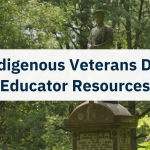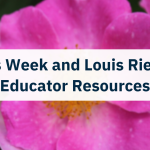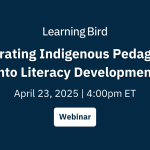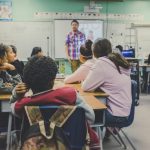The Importance of 2SLGBTQIA+ Inclusive Education
I grew up in an environment that valued heteronormativity above all, and I can confidently say that I’m much lesser for it. Growing up, I knew I was different from my friends, but I wasn’t equipped to understand what those differences were. When I became an educator, I promised to do better for my students, so they wouldn’t have to grow up feeling like I did.
So, how can you create a 2SLGBTQIA+ inclusive classroom? Keep reading for suggestions and resources to help create safer, more inclusive, and more supportive learning environments for all students year-round!
Why Talking About 2SLGBTQIA+ Experiences Matters
Excluding 2SLGBTQIA+ experiences and voices from education doesn’t stop people from being queer; it just stops us from being seen and supported. Sexual education programs, in particular, that exclude 2SLGBTQIA+ voices and experiences also result in worse health outcomes for queer youth than their heterosexual, cisgender peers.
Omitting 2SLGBTQIA+ experiences and voices from sexual education can lead to an increased risk of contracting sexually transmitted infections or ending up in abusive relationships for 2SLGBTQIA+ youth.
In addition to better health outcomes for queer students, 2SLGBTQIA+ inclusive education creates environments where all students feel safe and happy in their identities as they learn and grow. Students learn better and build confidence when they feel secure in their learning environments.
In their article Say More Than Gay, Sam Ames, Director of Advocacy & Government Affairs at The Trevor Project, wrote: “Among other things, our research consistently reinforces what years of evidence has been telling us: Supportive schools save lives.”
Implementing 2SLGBTQIA+ Inclusive Education
As educators, we know how important it is for students to see themselves reflected in the world around them. 2SLGBTQIA+ inclusive education takes the inclusion of queer experiences in education a step further by integrating 2SLGBTQIA+ experiences and voices into all subjects. 2SLGBTQIA+ experiences and perspectives are often relegated to health classes or Pride Month. When we isolate the experiences of 2SLGBTQIA+ people to health class or a single month, we disconnect queer experiences and realities from the larger curriculum, creating environments where queer students feel unwelcome, unwanted, and unseen.
The GLSEN explains that 2SLGBTQIA+ inclusive education is both a mirror and a window. It is a mirror because it reflects the culture and history of the 2SLGBTQIA+ community, giving 2SLGBTQIA+ youth a better understanding of themselves and affirming their gender identities. It’s also a window, because it invites students to listen and understand different worldviews and perspectives. Even if a student is not a member of the 2SLGBTQIA+ community, this awareness can help them build empathy and be better advocates and allies.
Keeping this in mind is essential when creating 2SLGBTQIA+ inclusive lessons and curriculum. Here are some ways to implement 2SLGBTQIA+ inclusive education:
- Remember that words have power. Incorporate inclusive language in your classroom and lessons by using non-gendered language.
- Incorporate 2SLGBTQIA+ events and stories throughout your curriculum. Avoid segmenting 2SLGBTQIA+ voices.
- Seek diversity, equity, and inclusion professional development opportunities in your area. Understanding intersectionality and how it can affect our personal and professional biases can help promote the inclusivity we bring into our classrooms.
- Promote and advocate for 2SLGBTQIA+ inclusive student groups and clubs.
Age-Appropriate Approaches and Resources
Kindergarten to Grade 6
Approach:
- Use inclusive storybooks and resources from authors with diverse backgrounds.
- Emphasize the importance of respect and celebrating diversity.
Resources:
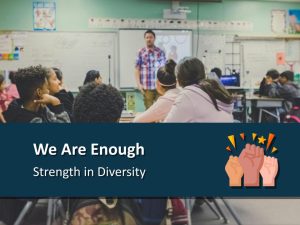 |
Celebrating Diverse Identities by Learning Bird
This resource kit encourages students to explore and consider diverse identities in their communities and how they can help create safe and inclusive spaces. Students will work through activities about challenging stereotypes and building empathy, helping them better understand diverse perspectives and foster collaboration. The resources are designed for Grades 4–6 and are available for free through our website. |
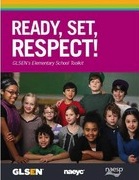 |
Ready, Set, Respect by GLSEN
This toolkit “provides a set of tools that will help you prepare to teach about respect and includes lesson plans that can help you seize teachable moments. The lessons focus on name-calling, bullying and bias, LGBT-inclusive family diversity and gender roles and diversity. They can be used as standalone lessons or as part of a school-wide anti-bias or bullying prevention program.” |
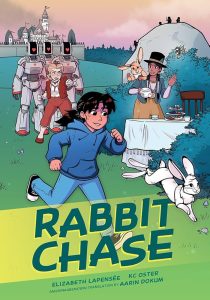 |
Rabbit Chase Written by Elizabeth LaPensée Illustrated by KC Oster Translated by Aarin Dokum “Anishinaabe culture and storytelling meet Alice in Wonderland in this coming-of-age graphic novel that explores Indigenous and gender issues through a fresh yet familiar looking glass.” |
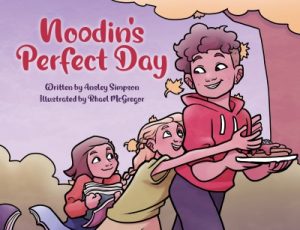 |
Noodin’s Perfect Day Written by Ansley Simpson Illustrated by Rhael McGregor “Noodin had their perfect day planned – until surprise babysitting interrupts their plans and sends them on an urban adventure! When Noodin’s perfect day is interrupted, they seek adventure instead, spending the day with their human, animal, and tree cousins in the city. But will Noodin ever get the pancakes they’re craving? Come along and find out!” |
 |
And Tango Makes Three Written by Justin Richardson and Peter Parnell Illustrated by Henry Cole “At the penguin house at the Central Park Zoo, two penguins named Roy and Silo were a little bit different from the others. But their desire for a family was the same. And with the help of a kindly zookeeper, Roy and Silo got the chance to welcome a baby penguin of their very own.” |
Grades 7–9
Approach:
- Introduce more detailed ideas about gender identity and sexuality.
- Continue to emphasize empathy, respect, and diversity in lesson examples.
Resources:
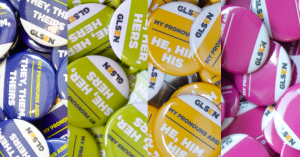 |
Pronoun Guide by GLSEN
“This guide is created to help anyone learn how to use people’s correct pronouns. Everyone in your school community should learn, educate, and advocate for the inclusive use of pronouns for all.” |
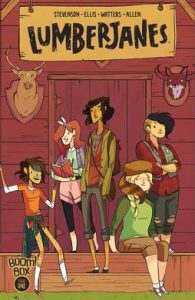 |
The Lumberjanes Series Written by ND Stevenson, Shannon Watters, and Grace Ellis Illustrated by Gus A Allen “Five best friends spending the summer at Lumberjane scout camp… defeating yetis, three-eyed wolves, and giant falcons….. what’s not to love?!” |
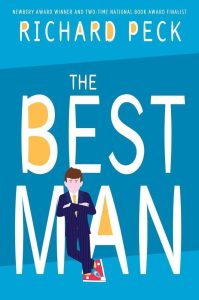 |
The Best Man Written by Richard Peck “Newbery Medalist Richard Peck tells a story of small-town life, gay marriage, and everyday heroes in this novel for fans of Gary Schmidt and Jack Gantos.” |
Grades 10–12
Approach:
- Comprehensive sex education with 2SLGBTQIA+ perspectives and information.
- Encouragement of student-led advocacy and initiatives.
Resources:
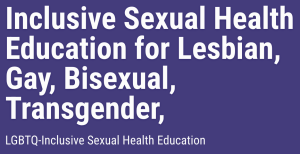 |
Inclusive Sexual Health Education for Lesbian, Gay, Bisexual, Transgender by GLSEN
“Educators can use [these resources] to ensure all students are seen and validated in their health and sexuality classes. If you’re a health and/or sexuality educator, you can share these resources with your administration and, where relevant, use them in your classroom.” |
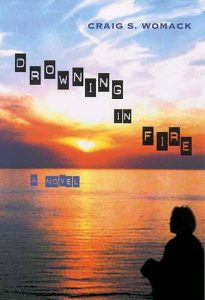 |
Drowning in Fire Written by Craig S. Womack “Interweaving past and present, history and story, explicit realism and dreamlike visions, Craig Womack’s Drowning in Fire explores a young man’s journey to understand his cultural and sexual identity within a framework drawn from the community of his origins.” |
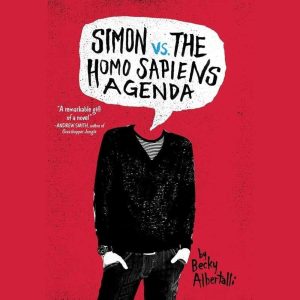 |
Simon vs. the Homo Sapiens Agenda Written by Becky Albertalli “Sixteen-year-old and not-so-openly gay Simon Spier prefers to save his drama for the school musical. But when an email falls into the wrong hands, his secret is at risk of being thrust into the spotlight.” |
General Resources
- 2SLGBTQIA+ Resources by Sexual Orientation and Gender Identity (SOGI) Inclusive Education at the University of British Columbia
- NEA LGBTQ+ Resources by the National Education Association
Navigating Resistance to 2SLGBTQIA+ Inclusive Education
Advocating for 2SLGBTQIA+ inclusive education can have its challenges. Promoting and advocating for 2SLGBTQIA+ inclusive education can result in resistance from parents or other educators. The best strategy for this resistance is to engage with and educate those resisting and show them how inclusive education benefits everyone. Another approach is to find supportive staff and community partners. There is strength in numbers.While advocating can be challenging, it’s also vital. Creating a safe and inclusive environment makes students feel secure in their identities, which helps them thrive as they learn and grow.
Getting Started
Hopefully, you’ve found at least one resource above to help you get started. If this is new to you, it’s easy to feel overwhelmed about where to start. My only advice is to start small and be kind to yourself. By actively deciding to include 2SLGBTQIA+ experiences and voices in your lessons, you’re on your way toward creating an environment where students can feel safe to explore their identities and be their authentic selves.
Note: The term “queer” is not universally-accepted within the 2SLGBTQIA+ community. It is used in this article in a reclaimed and non-derogatory sense and reflects the personal preferences of the author.



